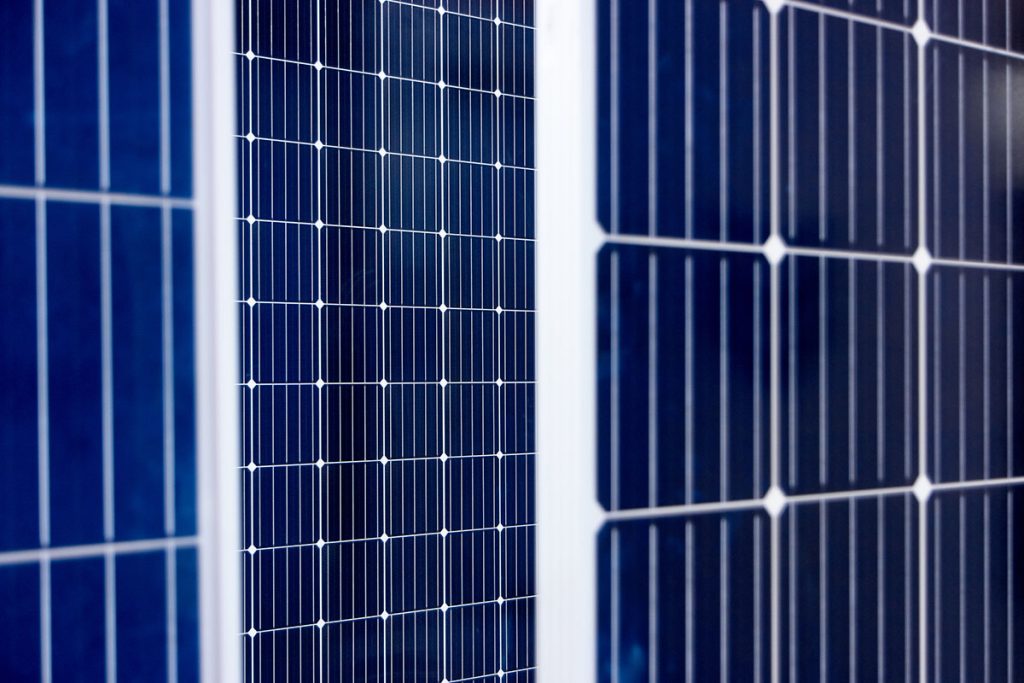Elements of a photovoltaic system
The solar generation and the load of a system vary from day to day, due in the first case to climatic changes, the season of the year, time of day, etc. and, in the second case, due to the variation in consumption, irregular peak loads, etc.
Production and consumption, are quite random and hence the convenience of resorting to their analysis, modeling and simulation in order to predetermine the behavior of the system with the greatest possible accuracy.
In a photovoltaic system, it is necessary to add a conditioning and storage stage before it can be used, in order to adjust the output voltage and power to the values appropriate to each case.
In those autonomous systems in which alternating current is needed, it will be necessary to introduce an inverter that converts direct current to alternating current with a specific voltage, waveform and frequency.

The storage system (accumulator or battery) has the mission of providing power to loads continuously and is charged by the energy produced by the photovoltaic generator during periods when there is radiation. When it is fully charged, this process must be interrupted. Both the solar panel and the battery constitute two fundamental elements in a solar photovoltaic system, therefore, the correct sizing of both will allow achieving the desired reliability.
The state of charge variations of the battery must be controlled to prevent them from reaching unwanted states (overcharge and discharge), since They can cause deterioration of the battery, most of the time irreversible.. To do this, electronic devices must be introduced such as a charge regulator, a DC-AC converter for those applications that require alternating current or a maximum power point follower that forces the solar panel to always work at said maximum power point.
Energy collection subsystem
The conversion of solar energy into electrical energy Directly it occurs as a consequence of the so-called photoelectric or photovoltaic effect (photovoltaic means converting light into volts).
If a solar cell that is connected to an external load is illuminated, a potential difference will occur in said load and a circulation of current that exits the external circuit through the positive and enters the cell again through the negative. Under these operating conditions, the solar cell behaves as an energy generator.
Accumulation subsystem
In photovoltaic systems the battery is called accumulator. The accumulator differs from a normal battery in that it is rechargeable. The use of the battery in a photovoltaic solar system brings a series of advantages such as:
- Capacity for provide energy in periods when there is no sunlight.
- Stable voltage for the system.
- Capacity for store the energy produced in solar panels and that exceeds the instantaneous demand, thus reducing energy losses.
- Satisfy the instantaneous peaks of the power demanded by the load.

It also carries a number of disadvantages:
- It considerably increases the installation cost and system maintenance activity.
- Add complexity.
- Reduces system reliability.
In photovoltaic installations, the usual thing is use a set of batteries to store the electrical energy generated during the hours of radiation, for later use in times of low or no sunshine. It is important to note that the reliability of the overall electrification installation depends largely on that of the accumulation system, and is therefore an element that must be given the great importance it deserves.
Regulation subsystem
For satisfactory operation of the installation, a device must be installed at the junction of the solar panels with the battery. load regulation system. The regulator's fundamental mission is to prevent the battery from continuing to receive energy from the solar collector once it has reached its maximum charge. If once this is reached, you try to continue introducing energy, gasification or heating processes begin in the battery that can become dangerous and, in any case, shorten the life of the battery.

Another function of the regulator is overload prevention, in order to prevent the battery charge from being exhausted excessively, this being a phenomenon that can cause a significant decrease in its charging capacity.
Current adaptation subsystem
We are referring to converters and inverters, elements whose purpose is to adapt the characteristics of the current generated to that demanded totally or partially by the applications.
If you want to learn more about energy efficiency and become an expert in small and large scale renewable energy issues, don't miss the opportunity to sign up for our Master in Efficient Management of Renewable Energies.



































